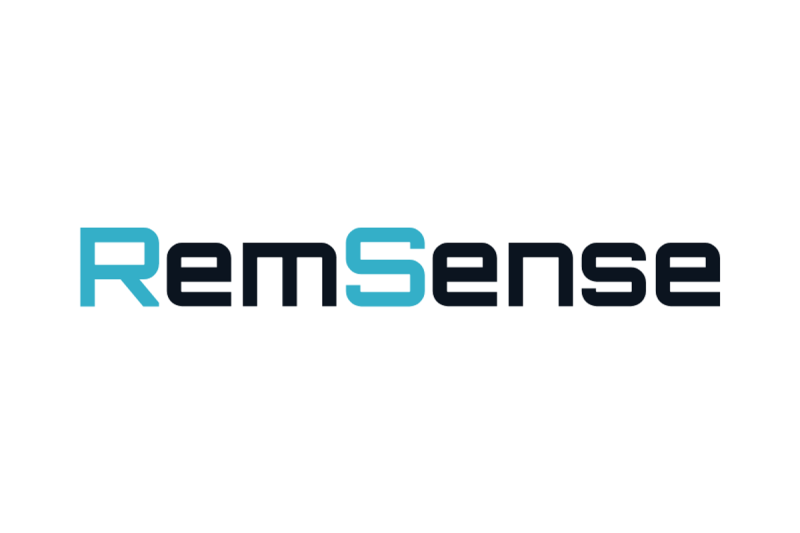
 RemSense Technologies (REM:AU) has announced Chevron Extends Partnership with REM in Major Contract Award
RemSense Technologies (REM:AU) has announced Chevron Extends Partnership with REM in Major Contract Award
Download the PDF here.

 RemSense Technologies (REM:AU) has announced Chevron Extends Partnership with REM in Major Contract Award
RemSense Technologies (REM:AU) has announced Chevron Extends Partnership with REM in Major Contract Award
Download the PDF here.


Investor and author Gianni Kovacevic discusses silver’s price pullback, saying that in the long term he sees the white metal reaching triple digits.
He expects oil prices to reach that level too, but emphasized that he sees lithium as the truly contrarian play for the rest of 2025 and into next year.
Securities Disclosure: I, Charlotte McLeod, hold no direct investment interest in any company mentioned in this article.


Volatility punctuated the global lithium market during the third quarter of 2025, as prices, supply/demand dynamics and geopolitics converged to reshape the landscape.
After slipping to a four year low at the end of June, benchmark lithium carbonate prices rallied through July to reach an 11 month high of US$12,067 per metric ton on August 21. However, the momentum proved unsustainable and prices slipped shortly thereafter, ending the three month session at US$11,185.89.
According to Fastmarkets, the surge was driven by rumors that Australian producers Mineral Resources (ASX:MIN,OTC Pink:MALRF) and Liontown Resources (ASX:LTR,OTC Pink:LINRF) might scale back supply.
Both companies denied the reports, and analysts have suggested that even if such reductions were implemented, they would do little to rebalance the current surplus in the lithium market.
“The nascency of the lithium market means that it is prone to be led by sentiment,” Fastmarket’s Claudia Cook wrote in a July update. “However, with healthy inventory levels and continued ramp-up of production, the reported supply cuts, even if they proved true, may not be enough to dip the market into a deficit.”
US policy uncertainty also weighed on sentiment. The Trump administration’s bill to roll back electric vehicle (EV) tax credits, alongside tariff concerns and a perceived retreat from the Inflation Reduction Act, rattled investors.
The repeal had the potential to spur a short-term rush in EV purchases, although liquidity in North America remains thin, and the medium-term outlook has turned bearish, Cook noted.
Elsewhere China’s fair competition policy — intended to curb market monopolies and prevent below-cost dumping — stirred speculation across the lithium supply chain. Though the directive primarily targets downstream industries, traders are watching closely to see whether it will ripple upstream and influence pricing dynamics.
The largest undercurrent for the lithium market is excessive supply. Since 2020, mined output has climbed 192 percent from 82,000 metric tons to 240,000 metric tons in 2024, as outlined by the US Geological Survey.
As supply grew, demand was unable to keep pace, leading to a mounting glut that has weighed on prices.
“While futures activity can catalyse short-term price movements, beneath the surface demand remains tepid, inventories high and buyers cautious, underscoring a disconnect between price action and market reality,” Paul Lusty, head of battery raw materials at Fastmarkets explained in a September update. “We expect continued price instability in the near term with potential for further corrections unless meaningful supply disruptions materialise.”
The supply increase was anticipated to satiate a growing appetite for EVs that has yet to fully materialize.
The EV boom has fueled strong long-term growth forecasts for lithium, but the market is now facing a sharp imbalance. Global EV sales climbed past 17 million units in 2024 and are projected to top 20 million in 2025, yet a 22 percent surge in mined supply last year has outpaced demand, pushing prices lower and creating a persistent oversupply.
This discrepancy was underscored by industry attendees at Fastmarkets’ Lithium Supply & Battery Raw Materials conference, who warned that the imbalance could persist until at least 2030.
As a result, lithium prices remain under pressure despite strong EV uptake, and a meaningful re-balancing will likely depend on new supply expansions being delayed, mine closures and steeper than anticipated demand growth — potentially in the second half of the decade.
With EV demand expected to accelerate beyond 2030 and new supply projects lagging, Q3 2025 could mark the start of a tighter era. For investors watching battery metals, the key question is whether the market has found a floor — or is merely in the calm before the next supply squeeze.
As mentioned, the market did find support through July and August, thanks in part to Chinese battery giant Contemporary Amperex Technology (CATL) (SZSE:300750,HKEX:3750) suspending operations at its Jianxiawo lepidolite mine. Located in the country’s Jiangxi province, it is one of the world’s largest lithium sources.
The shutdown followed the August 9 expiration of the mine’s operating permit, with CATL confirming it is seeking an extension but providing no timeline for restarting production. The halt was expected to last at least three months, removing about 65,000 metric tons of lithium carbonate equivalent — roughly 6 percent of global supply — from the market and reigniting bullish sentiment in an otherwise oversupplied sector.
The shuttering of the mine propelled lithium prices and mining stocks.
In mid-October China introduced new export restrictions on advanced lithium-ion batteries, key materials and production equipment — a move set to ripple through global supply chains.
Effective November 8, 2025, companies will now need export licenses to ship high-energy batteries, cathodes, synthetic graphite anodes and related machinery abroad. The new policy follows July’s limits on lithium iron phosphate (LFP) technology exports, tightening Beijing’s control over the battery sector.
China produces over 70 percent of global cathode materials and more than 95 percent of synthetic graphite, making its export decisions pivotal. S&P Global notes in an October briefing that the new controls are expected to delay production timelines and complicate sourcing for manufacturers outside China, particularly in the US, which imports roughly two-thirds of its lithium-ion batteries from Chinese suppliers.
“Export control does not mean an outright export ban, but rather a stricter approval process,” said Fastmarkets’ Walter Zhang. “We believe that the primary intent is to counter measures such as the US OBBB (One Big Beautiful Bill) Act, while preventing potential technology transfer demands from European or American governments and avoiding the military or dual-use applications of advanced battery technologies.”
Additionally, the move adds a new front to the US-China trade standoff, with Washington expected to deepen partnerships with Korean and Japanese producers like LG Energy Solution and Panasonic to reduce dependency.
While China’s CATL will likely pivot toward Europe and emerging markets, global battery costs and supply volatility are expected to rise through 2026.
Outside of China, the US invested heavily in the lithium-mining segment in Q3.
On October 1, Washington released the first US$435 million tranche of a landmark US$2.23 billion loan to Lithium Americas (TSX:LAC,NYSE:LAC), marking one of the Trump administration’s most significant steps yet to strengthen domestic control over critical minerals.
The funds, directed through the Department of Energy, will support construction of the Thacker Pass lithium project in Nevada, which is set to become the largest lithium source in the Western Hemisphere.
As part of the deal, the department will receive warrants representing a 5 percent equity stake in Lithium Americas and an equivalent interest in its joint venture with General Motors (NYSE:GM).
The agency also agreed to defer US$182 million in debt service over five years, underscoring Washington’s long-term commitment to building a resilient battery supply chain.
Thacker Pass is central to US efforts to reduce reliance on Chinese lithium refining and rival major producers in Australia and Chile. Once operational, Phase 1 of the project will produce 40,000 metric tons of battery-grade lithium carbonate annually — enough to power roughly 800,000 EVs — and reinforce the administration’s push to secure supply.
Looking at the rest of the year and remainder of the decade sentiment towards lithium is cautiously optimistic, according to Benchmark analysts fresh off the heels of this year’s LME Week in London.
“Market participants noted that strong spodumene appetite continues amid limited lepidolite supply from Jiangxi,” a Benchmark overview states. “Attention turned to CATL’s Jianxiawo mine, with its start‑up – whether as soon as next month or delayed to early Q1 26 – likely to influence short‑term pricing.”
Securities Disclosure: I, Georgia Williams, hold no direct investment interest in any company mentioned in this article.
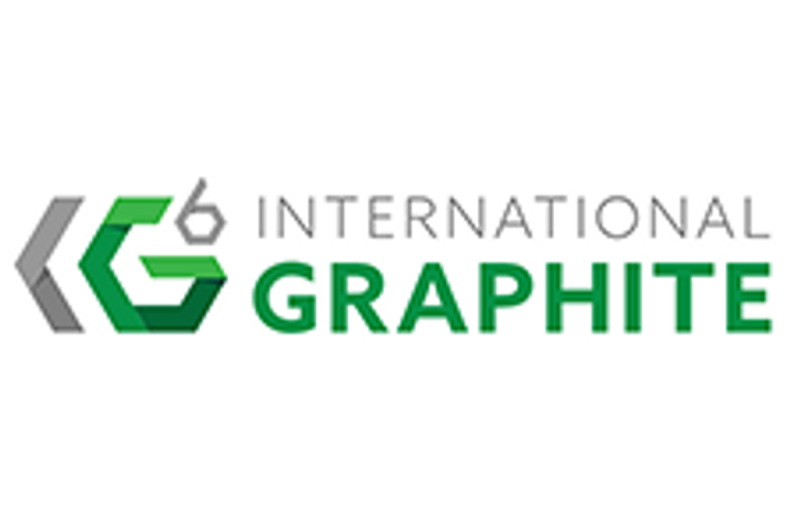
 International Graphite (IG6:AU) has announced Collie land acquisition & approvals move ahead
International Graphite (IG6:AU) has announced Collie land acquisition & approvals move ahead
Download the PDF here.
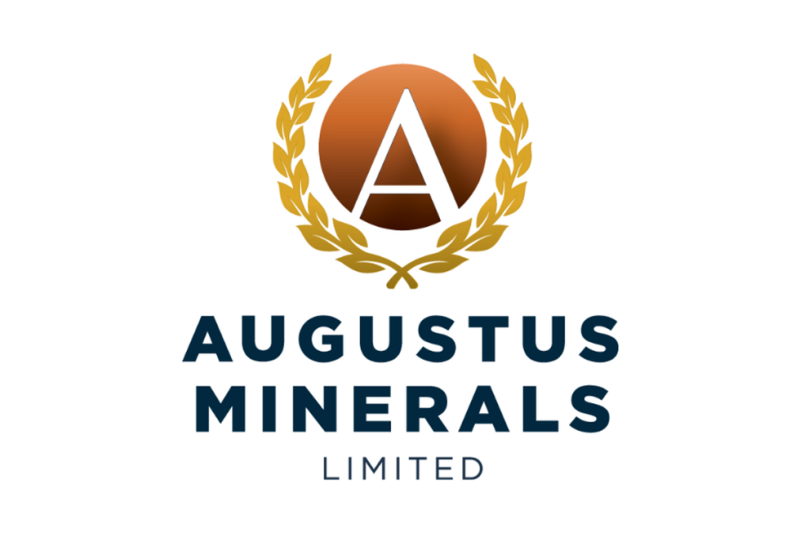

There’s a big play happening up in PNG with a potentially huge prize and the $9m ASX listed Augustus Minerals is in the thick of it. After years of dispute, court cases and controversy, the gold-rich Mt Kare project, that sits about 600kms north-west of Port Moresby, is about to be awarded to someone by the Papua New Guinea Government’s Mineral Resources Authority, or “MRA”.
The project has a long and arduous history that reads like a bit of a soap opera.
Originally discovered by CRA, now Rio Tinto, a million ounces of alluvial gold was rumoured to have been pulled out of it just via illegal mining in the late eighties and early nineties.
For the next two decades it was explored with great success by multiple parties, however historic landowner issues forced its owner into administration in 2008 when the project was subsequently awarded to PNG local company Summit.
Fast forward to 2011 and Summit was taken out by ASX listed company Indochine.
By 2015 some $125m had been spent on the ground and at that time, Indochine set tongues wagging at the Diggers and Dealers conference in Kalgoorlie when it revealed the stellar resource at the project. That resource was 42.5m tonnes going 1.54 g/t gold and 13.5 g/t silver for a whopping 2.11m ounces of gold and a further 18.4m ounces of silver. Put a little differently, Indochine said at the time it was sitting on 2.45m gold equivalent ounces at Mt Kare and there is no evidence that any of that has been mined to this day.
By early 2015, Indochine was in some financial troubles that were exacerbated when the PNG Government refused to renew its leases for Mt Kare towards the end of that year. Indochine sought a court ruling to overturn that decision in 2018, lost that battle and saddled up again for an appeal which was thrown out again in 2021.
That final court resolution attracted applications from a flood of hopefuls, all seeking to land the grand prize of the Mt Kare leases. Since then, the PNG MRA has been working its way through them, looking for a party with both money and mining expertise to hand it to.
It is dealing with each application in the order in which it was lodged and has already summarily dismissed the first in line. It is now onto hopeful No 2, a private company by the name of Tribune Mt Kare Gold Ltd.
‘If we’re successful in securing this ground, it would position Augustus at the doorstep of world-class geology…’
Augustus Minerals CEO James Warren
If Tribune can’t meet the high money and expertise bar being set by the MRA, ASX listed Augustus Minerals, run by Perth mining man Brian Rodan and James Warren – who has a PHD in Geology no less – is next in line for the 2.45m ounce gold equivalent prize – and that’s where things start to get interesting.
Rodan might as well have a mining tattoo stamped on his forehead. He was one of a handful of people who originally set up massive mining contractor Eltin Mining many years ago. Eltin, which was domiciled in Kalgoorlie, ruled the Australian mining scene for decades around the late 1990’s early 2000’s. Rodan then went on to build large mining contractor ACM which he subsequently sold for tens of millions of dollars.
Since that time he has founded, invested in and still continues to control multiple ASX-listed exploration companies. He has been the driving force behind capital raises for all of them totalling in the many millions of dollars over time.
Curiously, Rodan – who has been in the mining game for half a century – has some form at Mt Kare. He was the managing director of mining contractor ACM PNG when it was awarded a contract back in 2012 to do the stage 1 underground drilling and mine development at the project. For various reasons that contract never went ahead and to this day the project remains unmined, however at the time Rodan provided his expertise to create the mine design and he worked out what equipment was necessary to mine it and even mobilised that equipment to site. So unlike some of the other hopefuls shaking their tail feathers at PNG’s MRA, Rodan has been down and dirty with this project before.
By any measure Mt Kare sits in the land of the giants. It is about 15 kilometres southwest of Barrick’s world-class Porgera mine, which boasts a massive endowment of over 32 million ounces of gold. Further north again is the revered Ok Tedi with its 16m ounces of gold and 11 billion pounds of copper. To the south-east of Mt Kare is Newmont/Harmony’s crazy Wafi Golpu site, host to 22 billion pounds of copper and 23m ounces of gold.
Geologically Mt Kare is an Alkalic Epithermal deposit. Alkalic type deposits are a subset of low-sulphidation epithermal deposits and form some of the mega mineral deposits around the world. Their drill results are like eye-candy to a geologist and Mt Kare is no exception. In the past, Mt Kare has thrown up coffee-spitting drill hits like 111m at 9.8 grams per tonne gold from just 4m and 17.7m at 100 g/t gold from 59m – or maybe try 20m at 443 grams per tonne gold for size! Those sort of numbers would have the West Perth mining glitterati leaping out of bed every day.
Augustus Minerals CEO James Warren said recently; “If we’re successful in securing this ground, it would position Augustus at the doorstep of world-class geology and give shareholders exposure to a project with genuine scale potential.”
For now however, Augustus’ official language on Mt Kare remains measured, as it should. “Quietly confident” is about as strong as it gets.
And while the PNG story provides the blue-sky narrative, Augustus is far from idle on home soil. The company is already advancing on multiple fronts across its West Australian portfolio, most notably the Music Well gold project which sits about 35 kilometres north of Leonora where early fieldwork has delivered results strong enough to lift eyebrows across the gold belt.
The company has completed more than a thousand surface-geochemistry samples and unearthed visible gold in quartz veins grading as high as two ounces to the tonne from the St Patricks prospect.
The maiden drill program will test undercover extensions at the Clifton East, Dodd’s, St Patricks and Black Cat prospects, all of which Augustus has ranked as high-priority greenfield targets.
Providing another string to the bow, the company also retains the Ti-Tree Project in the Gascoyne region of WA – a 1,700-square-kilometre package prospective for copper, gold, lithium, uranium and rare earths. While not the current focus, the Gascoyne ground adds a critical-minerals dimension that could gain traction as the company’s gold projects mature.
For now though, the big blue sky for Augustus comes in the form of Mt Kare. The PNG Government is looking for someone that has mining expertise and the ability to raise money to run it and whilst the credentials of the first hopeful in line, little known private company Tribune, are uncertain, Augustus has plenty of both.
And who knows, maybe no 1 and no 2 will join forces. Augustus could bring its public listing, money raising ability and mining expertise to the table and Tribune could bring its No 1 ticket holder status. And with 2.45m ounces of gold equivalent already discovered, it looks like there’s going to be plenty to go around.
Click here for the full Press Release


Westport Fuel Systems Inc. (TSX: WPRT Nasdaq: WPRT) (‘Westport’ or ‘The Company’) announces that the Company will release Q3 2025 financial results on Monday, November 10, 2025, after market close. A conference call and webcast to discuss the financial results and other corporate developments will be held on Tuesday, November 11, 2025.
Time: 9:00 a.m. ET (6:00 a.m. PT)
Call Link: https://register-conf.media-server.com/register/BI44c6d66e9dc84dd387df0e1ce164a19a
Webcast: https://investors.westport.com
Participants may register up to 60 minutes before the event by clicking on the call link and completing the online registration form. Upon registration, the user will receive dial-in info and a unique PIN, along with an email confirming the details.
The webcast will be archived on Westport’s website and a replay will be available at https://investors.westport.com .
About Westport Fuel Systems
Westport is a technology and innovation company connecting synergistic technologies to power a cleaner tomorrow. As a leading supplier of affordable, alternative fuel, low-emissions transportation technologies, we design, manufacture, and supply advanced components and systems that enable the transition from traditional fuels to cleaner energy solutions.
Our proven technologies support a wide range of clean fuels – including natural gas, renewable natural gas, and hydrogen – empowering OEMs and commercial transportation industries to meet performance demands, regulatory requirements, and climate targets in a cost-effective way. With decades of expertise and a commitment to engineering excellence, Westport is helping our partners achieve sustainability goals—without compromising performance or cost-efficiency – making clean, scalable transport solutions a reality.
Westport Fuel Systems is headquartered in Vancouver, Canada. For more information, visit www.westport.com .
Investor Inquiries:
Investor Relations
T: +1 604-718-2046
E: invest@Westport.com
![]()
News Provided by GlobeNewswire via QuoteMedia
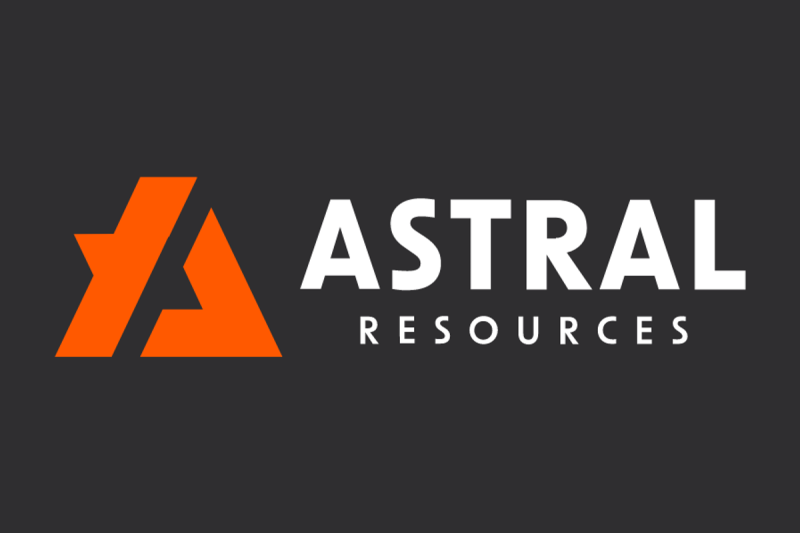
 Astral Resources (AAR:AU) has announced Theia In-fill Drilling Continues to Deliver Broad Gold Zones
Astral Resources (AAR:AU) has announced Theia In-fill Drilling Continues to Deliver Broad Gold Zones
Download the PDF here.
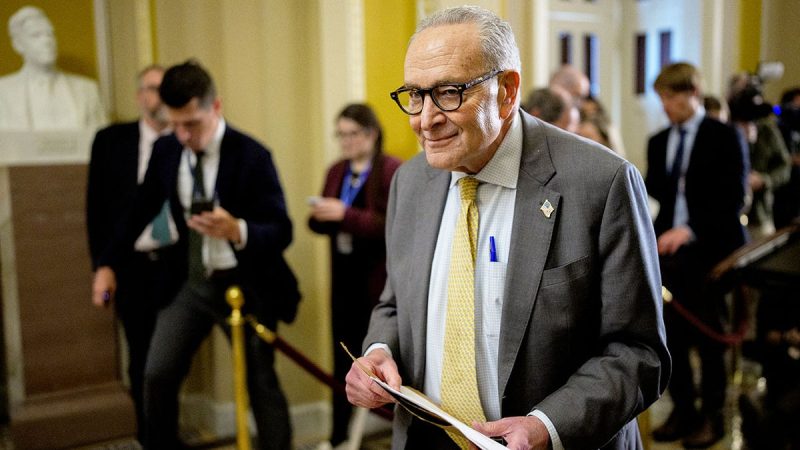
The government shutdown meandered into its 22nd day with no end in sight after a 12th GOP attempt to reopen the government was stalled and then blocked by Senate Democrats on Wednesday afternoon.
Senate Minority Leader Chuck Schumer, D-N.Y., and his caucus kneecapped Republicans’ bid to reopen the government for the 12th time in a 54-46 vote where Republicans needed at least 60 votes to advance the measure. The latest failed vote comes as Schumer has demanded another meeting with President Donald Trump and on the heels of an almost 24-hour filibuster by Sen. Jeff Merkley, D-Ore, that pushed the vote late into Wednesday.
During his marathon floor speech, which began at 6:23 pm on Tuesday, Merkley spoke on authoritarianism — what he called the Trump Administration’s overreach on immigration, separation of powers, and more.
‘Republicans have shut down the government to continue the strategy of slashing Americans’ healthcare,’ Merkley said, referring to the healthcare-centered debate holding up consideration of the government’s funding.
He concluded his remarks at 5:00 p.m. on Wednesday.
Little has changed in the upper chamber since the shutdown began. Schumer and the Senate Democratic caucus demand that there be a real, ironclad deal to extend expiring Obamacare subsidies, while Senate Republicans remain adamant that there is no path forward available on the matter until the government is reopened.
But what is old is new in a repeating cycle, and Schumer wants to meet with Trump again.
Schumer, speaking on behalf of House Minority Leader Hakeem Jeffries, D-N.Y., requested another meeting with Trump ahead of the vote in a bid to go around Senate Majority Leader John Thune, R-S.D., and congressional Republicans to secure a deal.
There have been informal talks — more casual conversation than true negotiation — between Republicans and Democrats, but nothing has materialized that puts lawmakers any closer to solving the ongoing stalemate.
‘Hakeem and I reached out to the president today and urged him to sit down and negotiate with us to resolve the healthcare crisis, address it and end the Trump shutdown,’ Schumer said. ‘He should sit — the things get worse every day for the American people. He should sit down with us, negotiate in a serious way before he goes away.’
The last time the top congressional Democrats met with Trump came just a day before the climactic vote to avert a shutdown. Neither side walked away with a compromise, or agreement, to keep the lights on.
Fast-forward to the shutdown’s fourth week, and Trump signaled he’d speak with Schumer and Jeffries — only after the government is reopened.
‘The government has to be open,’ he said. ‘You know how long it will take for them to do that? Just say, ‘OK, government is open.’ That’s it. There is nothing — They’re not negotiating.’
‘What they’re doing is saying they lost the negotiation,’ Trump continued. ‘And when we got the great ‘big beautiful [bill]’ done, they lost the negotiation. Now they’re saying, ‘Well, we want to get some of the things we lost.’ But the problem is the things they lost are very bad for our country.’
Congressional Democrats’ initial demands, made in a counter-proposal to the House-passed continuing resolution (CR), called for a permanent extension to the enhanced Obamacare premium tax credits and guardrails on Trump’s ability to claw back congressionally approved funding, among other things.
A White House official doubled down on Trump’s position and told Fox News Digital, ‘We will not have policy conversations while the Democrats are holding the American people hostage. Reopen the government.’
While Democrats desire more than just an extension to the COVID-19-era subsidy, they’ve made their primary argument all about the tax credits.
Thune offered Senate Democrats a vote on the subsidies, but so far they have declined to take the leap and instead are holding out for a guaranteed outcome in the shutdown fight. However, that is unlikely to come as Republicans and the White House, so far, are equally dug in against Schumer’s demands.
‘I think [Trump] wants the Democrats to take ‘yes’ for an answer,’ Thune said. ‘We’ve offered them a lot of the things they were asking for — a normal appropriations process, an opportunity to get a vote on some of the things that they want to see voted on, with respect to the expiring Obamacare enhanced subsidies. But that can’t happen until we open up the government.’
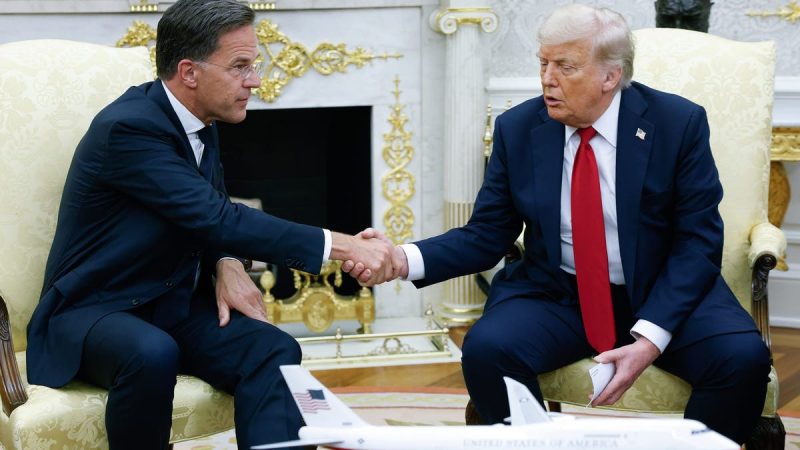
President Donald Trump met with NATO Secretary-General Mark Rutte Wednesday — days after Ukrainian President Volodymyr Zelenskyy visited the White House andafter calling off a meeting with Russian President Vladimir Putin.
‘We canceled the meeting with President Putin,’ Trump told reporters in the Oval Office with Rutte Wednesday. ‘It just it didn’t feel right to me. It didn’t feel like we were going to get to the place we have to get. So I canceled it. But we’ll do it in the future.’
Trump also shed insight into why he isn’t interested in arming Ukraine with Tomahawk missiles, after indicating earlier in October he might do so.
‘There is a tremendous learning curve with the Tomahawk. It’s a very powerful weapon, very accurate weapon,’ Trump said. ‘And maybe that’s what makes it so complex. But it will take a year. It takes a year of intense training to learn how to use it, and we know how to use it. And we’re not going to be teaching other people. It will be just too far out into the future.’
Rutte said he visited the White House to discuss ways to end the war, although he said ‘no peace plan is on the table.’
‘That’s why I’m here — to dialog again with the president … how NATO, my colleagues and other colleagues in NATO can be of maximum support to get that,’ Rutte said.
NATO announced Tuesday that Rutte would visit Washington Wednesday, as Trump has said he wants to direct his focus on ending the conflict between Russia and Ukraine following the ceasefire deal in the Middle East.
Ahead of his arrival at the White House, Rutte said that Wednesday’s White House visit aimed to build on the momentum after securing the peace agreement in the Middle East.
‘I was texting with the president after an enormous success in Gaza, and we said, ‘Hey, let’s have a meeting in Washington to discuss how we now can deliver his vision of peace in Ukraine,’’ Rutte told reporters on Capitol Hill Wednesday after meeting with lawmakers, according to The New York Times.
‘I have total confidence in President Trump. He’s the only one who can get this done,’ Rutte said.
Rutte has visited the White House on several occasions during Trump’s second term, including in July and also in August after Trump’s Alaska summit with Putin. NATO has backed Ukraine since Russia first invaded, and has provided Kyiv with military equipment and other assistance since 2022.
In August, Rutte and other European leaders joined Zelenskyy in an effort to advance peace talks to end the war in Ukraine. At the time, Trump said that European nations would shoulder the bulk of the burden by providing Ukraine with security guarantees in an attempt to deter future aggression from Russia.
As part of these security guarantees, Ukraine has sought to become a member of NATO during the peace negotiations. However, Trump has routinely ruled that out as a possibility.
Meanwhile, Russia’s list of demands has historically included prohibiting Ukraine from ever joining NATO, and concessions on some land that previously belonged to Kyiv.
Additionally, Rutte’s meeting comes after Trump appeared to throw cold water on any hopes that the U.S. would arm Ukraine with Tomahawk missiles, like Trump had said he was considering doing days ahead of Zelenskyy’s visit.
‘I would much rather have them not need Tomahawks,’ Trump told reporters Friday. ‘I would much rather have the war be over to be honest, because we’re in it to get the war over.’
Additionally, Trump changed his tune on whether Ukraine would need to cede territory it had lost to Russia as part of a peace deal. Although Trump altered his position in September and said that Ukraine could secure back its lost territory, Trump reverted to his previously held position on the matter.
‘They can negotiate something later on down the line,’ Trump told reporters Sunday. ‘But I said cut and stop at the battle line. Go home. Stop fighting, stop killing people.’
The change in tone came after Trump spoke with Putin Thursday and the two were originally slated to meet this month in Budapest. However, plans for the meeting were scrapped after Secretary of State Marco Rubio’s call with Russian Foreign Minister Sergey Lavrov.
‘Secretary Rubio and Foreign Minister Lavrov had a productive call,’ a senior official said in a statement Tuesday to Fox News. ‘Therefore an additional in-person meeting between the Secretary and Foreign Minister is not necessary and there are no plans for President Trump to meet with President Putin in the near future.’
Meanwhile, Trump has recently cast doubt on whether Ukraine can defeat Russia.
‘They could still win it. I don’t think they will, but they could still win it,’ Trump told reporters Monday.
Fox News’ Gillian Turner and The Associated Press contributed to this report.
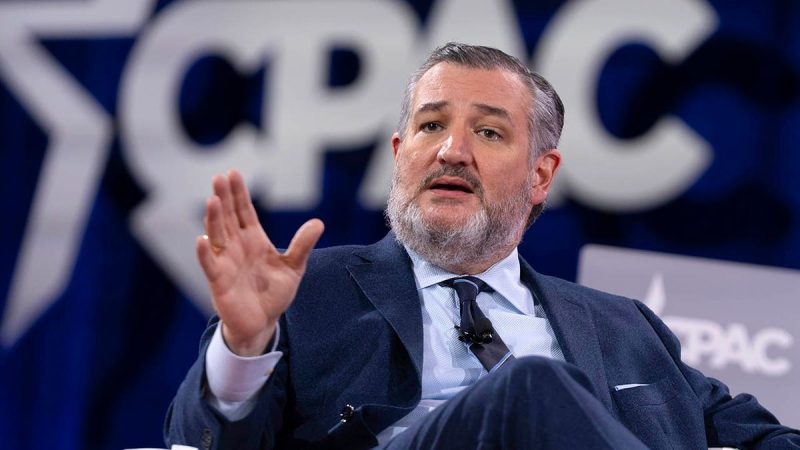
Over a decade ago, Sen. Ted Cruz, R-Texas, predicted that healthcare premiums would skyrocket, even in the face of subsidies put into effect under Obamacare that were meant to bring them down.
Today, the ballooning of those premiums and their accompanying subsidies are at the center of the 22-day shutdown that looks poised to get longer still.
‘Despite Obamacare subsidies, many Americans will still be paying higher premiums in 2014 as a result of Obamacare,’ Cruz said in 2013, referring to the Affordable Care Act (ACA).
In his 2013 floor speech, Cruz pointed to research from Avik Roy, a healthcare researcher who, at the time, was a senior fellow at the Manhattan Institute. Roy’s research made the case that subsidies passed by the Obama administration would do little to stop government-backed healthcare plans from growing more expensive over time or competing effectively with non-government-backed plans.
But even those forecasts have paled in comparison to the costs of the government’s emergency response to the COVID-19 pandemic.
The subsidies under Obamacare have vastly expanded in recent years. An emergency provision included in President Joe Biden’s 2021 American Rescue Plan widened the range of eligible applicants as a response to the global pandemic.
Now that those COVID-era provisions are set to sunset at the end of 2025, an expiration date set by Democrats themselves, Democrats are voicing alarm that Obamacare policyholders will have to shoulder the costs of health insurance without the enhanced supplemental aid.
According to the Committee for a Responsible Federal Budget, a nonpartisan think tank that focuses on fiscal policy, continuing the expanded credits could cost upwards of $30 billion annually. Findings by KFF, a healthcare policy group, say that over 90% of the 24 million Obamacare enrollees make use of the enhanced credits.
KFF analysis indicates that the enhanced premium tax credits saved subsidized enrollees an average of $705 last year.
Democrats in Congress, led by House Minority Leader Hakeem Jeffries, D-N.Y., and Senate Minority Leader Chuck Schumer, D-N.Y., have demanded some sort of extension to the already expanded COVID-era subsidies as a condition for passing spending legislation to end the current government shutdown, which is now the longest full shutdown in history.
Republicans, who maintain that the subsidies are completely unrelated to government funding considerations, have said lawmakers will address the subsidies when the government is open again.
The most conservative members in Congress have said cutting back on the subsidies is key to returning the government to pre-COVID levels of funding.
Lawmakers in the Senate have voted 11 times on a short-term spending extension meant to keep the government open through Nov. 21 but have so far failed to move past the gridlock over the enhanced premium tax credits.
Cruz did not immediately respond to Fox News Digital’s request for comment.